Description: This perennial plant is 1-3½' tall and unbranched, except near the apex where the flowering stems occur. The stems are round and covered with fine white hairs. They are initially green, but often become brown with age. The alternate leaves are up to 4" long and 1½" across. They are sessile against the stem toward the top, but have short petioles near the bottom. These leaves are lanceolate, smooth or sparingly dentate, grey- or yellow-green, and finely pubescent. The smaller leaves near the flowerheads are much reduced in size and linear. Sometimes there are small leaves appearing in the upper axils of the larger leaves along the central stem. The upper stems terminate in panicles of flowerheads. Individual flowerheads consist of 7-21 small creamy white florets.
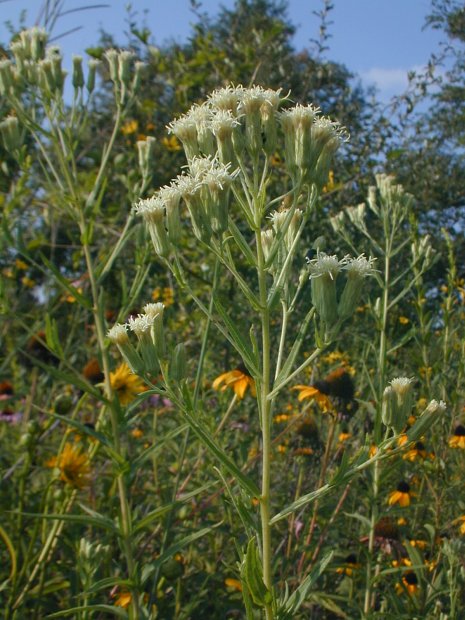
A floret has a narrowly tubular corolla with 5 small spreading lobes and a protruding divided style. Each flowerhead is subtended by a cylinder of narrow green bracts (phyllaries); it is a little less than ½" long. The blooming period occurs during late summer or early fall, and lasts about a month. The achenes are long and narrowly cylindrical, grey or light brown, and they have tufts of white hair (or sometimes tawny hair) at their apices. These tufts of hair are often more striking in appearance than the flowers. Seed distribution is provided by the wind. The root system consists of a central taproot that can run deep into the ground. Sometimes, this plant will tiller at the base, sending up multiple stems from the taproot. However, it doesn't reproduce vegetatively by means of rhizomes, unlike many other prairie plants.
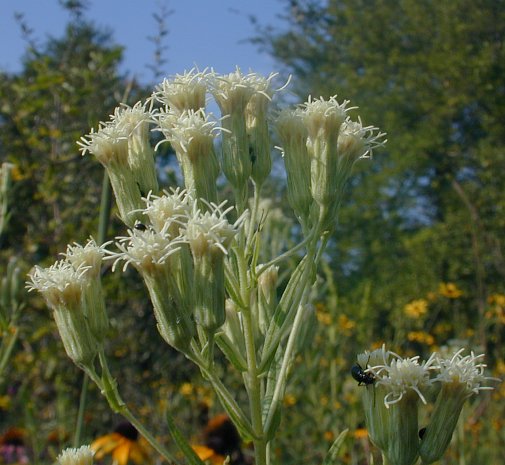
Cultivation: The preference is full sun and dry conditions; a little shade is also tolerated. This plant prefers poor soil that contains too much clay, sand, or gravel, and it can thrive on slopes. Its toleration of drought is better than most plants in the tallgrass prairie. The leaves may turn yellow and start to shrivel away toward the end of the year, but this is normal. This plant doesn't spread aggressively.
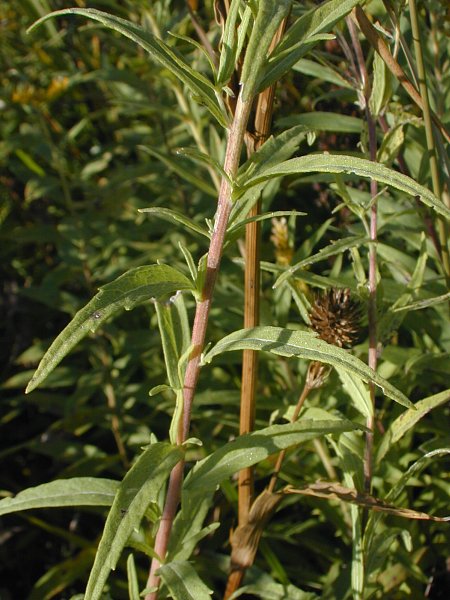
Range & Habitat: The native False Boneset occurs occasionally in central and northern Illinois; in many areas of southern Illinois, it is uncommon or absent (see Distribution Map). Habitat includes dry upland areas of black soil prairies, gravel prairies, dolomite prairies, clay prairies, hill prairies, bluffs, limestone glades, open woodlands, and sandy savannas. False Boneset doesn't form large colonies, but is more likely to occur as sporadic plants. In moist areas with rich soil, it has trouble competing with taller, more aggressive forbs and grasses.

Faunal Associations: Bumblebees, leaf-cutting bees (Megachile spp.), Halictid bees, and other bees visit the flowerheads for nectar and pollen (Mitchell, 1960/1962; Moure & Hurd, 1987). Butterflies, skippers, and probably other insects visit the flowerheads for nectar and/or pollen too. The caterpillars of some flower moths feed destructively on the flowerheads and developing seeds; they include such species as Schinia trifascia (Three-lined Flower Moth), Schinia oleagina (Oleagina Flower Moth), and Schinia grandimedia (False Boneset Flower Moth). The last moth occurs in areas that lie mostly west of Illinois. Other insects feeders include Lygus lineolaris (Tarnished Plant Bug) and other polyphagous stink bugs, Aphis coreopsidis (an aphid), and larvae of a Noctuid moth, Dichagyris grotei (Panzer, 2000; Vestal, 1913; Hottes & Frison, 1931).
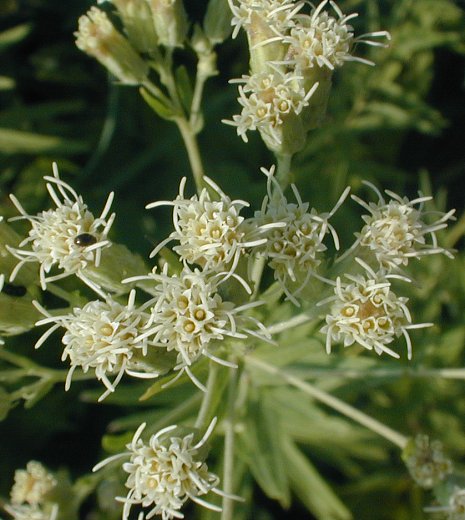
In addition, such grasshoppers as Melanoplus confusus (Little Pasture Grasshopper), Melanoplus differentialis (Differential Grasshopper), Melanoplus keeleri (Keeler's Grasshopper), and Melanoplus discolor (Contrasting Spur-throated Grasshopper) feed on False Boneset. The last grasshopper is monophagous on this plant, although it occurs in areas that lie west of Illinois (Campbell et al., 1974; Joern, 1985; Brust et al., 2008). Mammalian herbivores browse on False Boneset occasionally when little else is available, but its foliage is bitter and its overall food value is low. In pastures, False Boneset is considered an 'increaser' because livestock are not particularly fond of it.
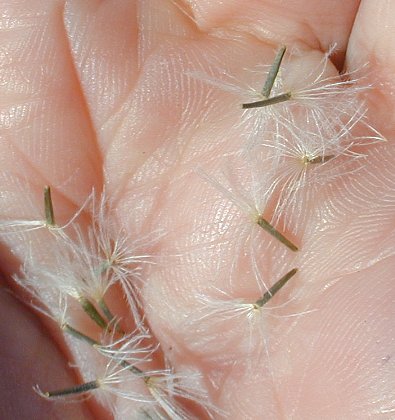
Photographic
Location:
The photographs were taken at Meadowbrook Park in Urbana, Illinois.
Comments:
False Boneset is similar in appearance to Tall Boneset (Eupatorium altissimum).
However, the
former plant has alternate leaves along its stems with only one
conspicuous vein, while the latter has opposite leaves with three
conspicuous veins. An older scientific name for False Boneset is Kuhnia
eupatorioides.